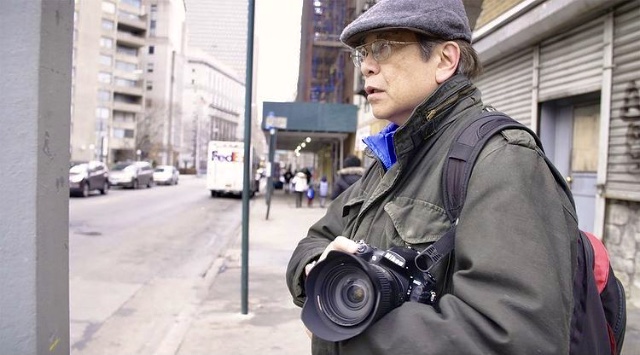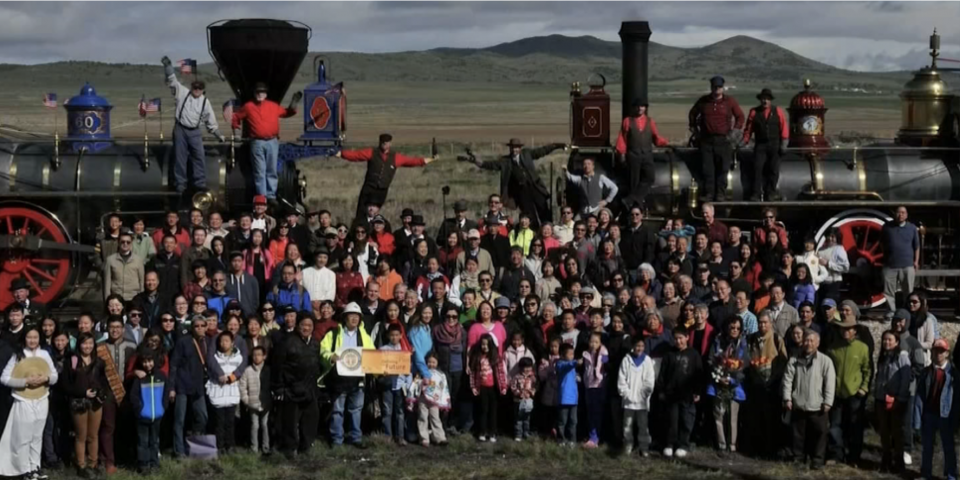
This story was written and reported by Lo-Down contributor Kari Jensen
Tributes to New York City photographer Corky Lee continue to flow in, more than a year after his death in January 2021.
“Dear Corky,” a documentary short by Curtis Chin, about the late chronicler of the Asian community, is making the rounds at film festivals and screens at an event at the Museum of the City of New York on May 25.
In their description of the film, the filmmakers write, “For over fifty years, Corky Lee photographed New York’s Chinatown, and Asian American communities around the country. With a strong sense of social justice, he captured activists, celebrities, and everyday heroes. Sadly, Corky fell to COVID. Through his own words and pictures, Dear Corky reveals the man behind the camera.”
A new exhibition, “Photographic Justice: A Tribute to Corky Lee,” at the Hon. Charles P. Sifton Gallery in Brooklyn opened on Friday, May 20 and runs through the fall of this year.
Young Kwok “Corky” Lee was born in Queens in 1947. Early on, he noticed that history often left out Asian Americans and their experiences. So for more than five decades, he used photography to document under-reported events in Asian American’s everyday lives.
“He knew that there was a whole world out there that knew nothing about Asian Americans and he wanted others to know about us and for us to see ourselves in the stories,” said Karen Zhou, a photographer and Mr. Lee’s long-time partner, speaking at a private reception for the courthouse exhibition May 19, recorded by the Chinatown Organization for Media Awakening.

“Photographic Justice” features the works of Mr. Lee and 31 other exhibitors, including Ms. Zhou. Her image in the show, shot at Lunar New Year, reminds her of photographing the annual Chinatown parades with Mr. Lee.
Mr. Lee used the term “photographic justice” to describe his mission to rectify the exclusion of Asian Americans from the nation’s visual history.
In one of his most iconic images, Mr. Lee restaged the “golden spike” meeting of two locomotives for the first Transcontinental Railroad, an 1869 black-and-white image, which depicted an all-white crowd, but excluded the Chinese laborers who laid much of the tracks.
Mr. Lee’s 2014 color photograph reenactment featured some descendants of those Chinese laborers at the same location in northern Utah. They are in a similar grouping, standing on or around two locomotives, which face each other, under a wide, blue sky. The image (below) is included in the “Photographic Justice” show.

Wai Ng, another one of the photographers in the exhibition, said Mr. Lee influenced his submission: a set of six photos of deserted streets in New York City’s Chinatown during the pandemic titled, “Yellow” racism & resistance.
“Chinatown was never like that [before],” Mr. Ng said. “It was eerie.”
Mr. Lee also chronicled the effort to combat anti-Asian racism and violence during the pandemic.
There is ongoing interest in preserving – and passing on – Mr. Lee’s work and legacy.
“Corky was never just about talking about Corky,” said his brother John Lee. “He is not absent because a lot of these other photographers have been similarly inspired by him.”
“Photographic Justice: A Tribute to Corky Lee” can be seen from 8:30 a.m. to 5:00 p.m., Monday through Friday, at the Hon. Charles P. Sifton Gallery, located on the first floor of the Eastern District of New York courthouse, 225 Cadman Plaza East, Brooklyn, NY, through Sunday, Nov. 20, 2022.
“Dear Corky,” the new documentary short focusing on Mr. Lee’s work, will be part of the program, “Mobilizing Chinatown: Past and Present on Film,” at the Museum of the City of New York on May 25.










